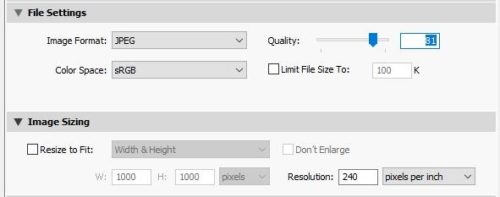For a wedding photographer, creating a compelling portfolio can be the difference between your business’s success and failure. A strong portfolio helps clients fall in love with your art before they ever speak to you, serving not only as a marketing tool but also a way of building consensus with your clients on things like style and intention. A strong wedding photography portfolio doesn’t happen by accident, though. You might be asking yourself how do I curate the perfect wedding portfolio? I feel there are 3 key considerations you have to understand about your own work and objectives before you begin to build your portfolio:
- Aesthetics
- Technical considerations
- Watermarks
If you’re looking to get started with wedding photography, or are trying to improve your business prospects in the industry, creating a strong portfolio is a critical step. Check out these tips to start creating an amazing set of images that are sure to wow your future clients!
Aesthetics
The fundamental questions behind a photography portfolio can be summed up as “What do I want this to represent and who is my intended audience?”. Answering these questions can help you make smart decisions about every aspect of your portfolio, from the images chosen to the way the portfolio is designed.
For most wedding photographers, I expect the answer to the first part of that question will be “I want this to represent the style of wedding photography I like to shoot”. I think what’s important about that answer is the question of style. You might be a very formal and traditional wedding photographer, creating very classic images. You might instead be an available-light, journalistically minded wedding photographer – you’ll end up making very different portfolio decisions compared to that classically minded photographer, and that’s ok. A good portfolio isn’t just supposed to drive inquiries, but instead, help you find the right clients for you. Misrepresenting your style, experience, or intentions is just going to result in unhappy clients.
The question of an audience might seem relatively simple. After all, the answer is probably “couples planning a wedding”. In reality, there’s more to it than that. As I mentioned in the style point, with a little thought you can turn your portfolio into a powerful marketing and customer service tool. If you’ve got a strong local connection, make sure to prominently feature some local landmarks in your portfolio. If instead, your desired clients are planning destination weddings, take the chance to show off how you’ve adapted your art to a variety of locales. By better understanding who you want to work with, you can refine your portfolio to help those clients find you, without even having to force the issue.
Supercharge Your Photography Website
Customize and Publish Your WordPress Photography Theme in Minutes
What are you waiting for?
As you build your mental picture of what your portfolio should represent and who your ideal client is, you might run into the first issue. If you’ve got a couple of answers to those questions, it’s understandable. The wedding market is competitive, and you might be loath to leave potential customers out. In that way, you might try and fit a ton of images into your portfolio, hoping to have something that appeals to everyone. After all, websites make it easy to just upload an entire Lightroom catalog’s worth of images. This isn’t a viable strategy, however. Too many photos in a single gallery are difficult to navigate, slows page load times, and takes the focus away from any single image.
Instead, try and focus on your strengths. Make sure that your portfolio represents the breadth of your skill and style, but consider pruning weaker images so that your winners really get a chance to shine. Even with just 20 or 30 images, you can show color as well as black and white work, portraits, detail shots, candids, and a few unique shots. I know it can be tough to eliminate those shots that you may personally feel connected to, but try to look at things clinically, and evaluate the message each shot sends to a potential client.
Also, consider the opportunity represented by having your portfolio online: it’s easy to continuously update things. As your style evolves and you have more opportunities to shoot, it’s easy to drop in new images and remove older pieces that are no longer representative. By doing this, you can keep improving your portfolio, as well as remain well adapted to the market.

How to Curate a Wedding Photography Portfolio
My favorite tool for curating is also one of the most common digital asset management tools: Lightroom. If you use a single master catalog for all your shoots, Lightroom makes it very easy to maintain a manual collection of your portfolio-worthy shots. If instead, you find that Lightroom works best for you with a variety of individual catalogs, perhaps per event, you can still export your shots with XMP enabled, and create a little catalog just for portfolio purposes.
One of the big reasons why I think Lightroom works so well for wedding photography portfolio curation is the variety of ways you can visualize and organize your work. Using a custom sort in grid view makes it easy to see how a page of thumbnails would look, while the variety of flags, stars, and color labels help you organize your images into subgroups.
Once you’ve got your images selected, Lightroom also has a number of convenient ways to export your images. Besides direct support for publishing to the web via Publish Services, the export dialog gives you great control over the technical aspects of the image file, including things like metadata, color space, and size.
If you’re not already a Lightroom user but are looking for a similar tool, consider Darktable. This open-source option offers many of the same features as Lightroom, making it a great way to get started with organizing your photos.
A final tip is don’t try and pick your final 30ish images from your entire catalog in one pass. Instead, start by selecting 100 or 200 shots that are strong images and represent your style well. Then, try to cut that in half, perhaps by running similar images head to head and retaining the stronger option. If you still need to cut further, consider prioritizing images by how well they work together, as well as individually.
Technical Considerations
Once you know what kind of photos you’re looking for, and you’ve gathered them together, next comes the important step of creating a final image file that works well from a technical perspective. While your website’s setup may influence the finer points of how this is done, in broad terms, a good image for web use should be in the sRGB color space, appropriately sized, and sharpened with that new size in mind.
Color space is one of the most important things to get right. While color management on the web and devices has come a long way in the last few years, color space issues can ruin the appearance of your images in an unparalleled way. These problems can leave your images looking washed out or garishly oversaturated. Fortunately, they’re easy to avoid. Just make sure that your final image is set up for the sRGB color space – broader color spaces like AdobeRGB and ProPhoto can be great for more advanced editing, but are not a good choice for consumer use on the web.

For size, I think the conventional expectations have grown outdated. In the past, web sizes were typically something like 1000 or 1500 pixels on the long side. These days, even phone’s displays can exceed that resolution, with Retina displays and 4K monitors increasingly common. As a result, consider uploading a larger size image. NextGEN Gallery offers easy resizing, making it possible to upload one size, then tweak it as needed.
If your website’s setup doesn’t support dynamically resizing, instead consider exporting at 2000 or 2500 pixels long, which I feel offers a good tradeoff between user experience, download times, and upload times. While less a consideration for wedding photographers when compared to some other photography genres, image theft can still be an issue. Larger images are potentially more attractive to steal, so it can be a factor as well when considering what size to choose. A good compromise may be to upload your wedding photography portfolio images at a larger size, while displaying things like proofing galleries at a smaller size or with a more prominent watermark.
For export sharpening, I like to keep things simple for web use. Lightroom allows you to apply an amount of sharpening on export, specifically calibrated for screen use. If you’re not using Lightroom, instead consider opening your image in Photoshop or your image editor of choice, and applying sharpening to taste after you’ve set your image’s final size.
One last consideration when preparing your wedding photography portfolio images for export is to tweak the brightness, contrast, and saturation. If your work is more subtle, uncalibrated consumer’s displays may leave it looking lifeless – consider combating this by adding a bump to brightness, contrast, and saturation. This step can be over-done, but it may be necessary to help your images retain the same visual impact compared to the hyper-saturated content that your viewers may be used to seeing.
Watermarks
The choice of whether to use watermarks or leave your images unmarked is a personal question. I know some photographers absolutely insist on having a large, noticeable watermark on every image they publish, while I’ve stopped using them years ago. For wedding photographers, whose work is often shared widely on social media, it might be worth adding them.
For proofs, free images to share on social media, or other promotionally focused shots, I’d encourage putting a small, legible, but still artistic watermark in one corner of the image. This way, you don’t have to worry about having your clients spell your URL or tag you in the post. Lightroom offers great features regarding watermarking, including letting you build it right into one of your export presets, but the same functionality is easily accomplished in Photoshop by adding a text layer and adjusting the opacity.

For the portfolio, however, I feel that a watermark is unnecessary. Firstly, your potential visitors are already on your site, eliminating the marketing potential of the mark. Secondly, while watermarks can discourage casual image misappropriation, they have to be far too intrusive to ward off more determined image thefts – instead, consider using an image tracking service like Pixsy to find instances of image misuse.
The last point of contention when using watermarks relates back to those images shared on social media. Watermarking an image ties it very closely to your brand, which can be both good and bad. As discussed, it can be helpful to refer viewers back to your web presence, but it can also present problems. Once you’ve distributed that watermarked image, your clients may further edit it or add filters. While letting go of that creative control isn’t a critical issue for images just used by your clients, it can be problematic when combined with your watermark. Now, viewers’ first impression of your work may be significantly altered from what your style actually is.
Wedding Photography Portfolio Conclusion
Curating the perfect wedding portfolio doesn’t have to be difficult – consider it an exciting opportunity to better understand both your work and your clients. Fortunately, there are great tools like Lightroom and Darktable to make sorting through your library easier, and their great export options make it easy to create the perfect finished files. Once you’ve got your images in mind, consider creating a website to share them – Photocrati offers dozens of starting designs, responsive displays, built-in galleries perfect for portfolios, and ecommerce support, all in one WordPress theme. For more information on building a compelling photography portfolio, make sure to follow us on Twitter and Facebook for more updates!
